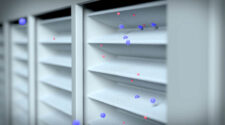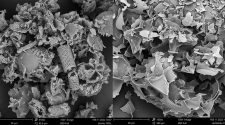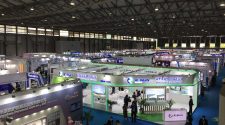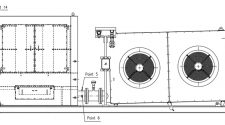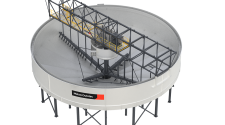As the saying goes, all good things must come to an end, and earlier this spring, over three years into the pandemic, I finally succumbed to the COVID-19 virus. Thankfully it was a mild case, but it did cause friends and family to comment that it was surprising that I had gone three years without experiencing this new right of passage. The reason for their surprise is that, in the course of the last three years, I have spent many days volunteering in vaccination clinics during the early vaccination rollout, have worked in an open office environment during some significant peak periods of outbreak, and logged over 150 domestic and international flights and spent multiple hundreds of hours in airports. It’s the last point, the time in the confined spaces of airplanes, that seemed most risky when considering all the microbes that were dodged. It was in wondering about this that led to the topic of this Tech Talk: Cabin Air Filtration in Aircraft.
Well before the COVID-19 pandemic, air travel had an unsavory reputation amongst travelers for the spread of disease. The Aerospace Medical Association noted, pre-pandemic, that increases in availability of air travel, and especially the increase in international air travel, results in the potential for the spread of illness amongst air travelers. They also recognize that many symptoms that passengers experience during or after air travel are physiological effects due to air travel stresses rather than actual microbial pathogen caused illnesses. These physiological effects are due to differences in aircraft cabin air pressure and humidity. The reduced barometric pressure results in a drop of blood oxygen saturation to levels as low as 90%, a level tolerable to most reasonably healthy air travelers. Air travelers with pre-existing conditions, such as those with coronary, pulmonary, and anemic conditions, may feel this stress more prominently.
Also of concern, is the lower aircraft cabin humidity, that has historically been as low as 10 to 20%. While the cabin humidity has been seeing increases with the advent of less corrodible aircraft materials, passengers will still experience “symptoms” such as dry congested sinuses and mildly dry sore throats. Setting these physiological effects aside, there are concerns about the spread of pathogens.
Setting aside the politicized and polarizing views regarding COVID-19 transmission methods and looking back to prior pathogen outbreaks of global significance, there is a wealth of peer-reviewed studies for pathogens such as H1N1 and influenza. In analyzing the impact of the 2009 H1N1 outbreak, it was noted, “The large-scale spatial diffusion was portrayed clearly as the virus was spreading through air travel. Our estimation validates that a solid relationship between H1N1 and air travel exists, and predictions could be made based on these findings. Also, the epidemic features of this novel H1N1 virus, including the basic reproductive number, the infectiveness duration, are estimated and control strategies are discussed.” In reviewing a sampling of the literature that discusses transmission of influenza on aircraft, a number of themes are common.
By 2022, HEPA filters were used on all aircraft, long and short haul, of the four major airlines in the United States.
The duration of the flight and the proximity to primary infected individuals are two prominent variables. Those travelling within two rows of the primary infected individuals in economy class are at a higher likelihood of being infected during the flight. Interestingly, some studies have shown a much reduced likelihood of transmission for passengers travelling in the first class cabin, generally attributed to lower passenger density or inter-passenger distance and due to less traffic within the smaller first class cabin. While studies note higher transmission likelihood for those passengers in closer proximity and/or having higher duration of exposure, within a given service cabin, the overall likelihood of transmission is also higher for other passengers.
One particularly telling account from 2009 involved an aircraft with 54 passengers who experienced a ground delay of three hours. “Within 72 hours, 72 percent of the passengers became ill with symptoms of cough, fever, fatigue, headache, sore throat and myalgia. One passenger, the apparent Index case, was ill on the airplane, and the clinical attack rate among the others varied with the amount of time spent aboard.” A majority of passengers were diagnosed with H3N2 influenza via either serologic evidence or other tests. Notably, “the airplane ventilation system was inoperative during the delay and this may account for the high attack rate.” This is a clear indication of the importance of aircraft ventilation and filtration systems, particularly for limiting or preventing disease transmission for those passengers outside of the near proximity zone.
Conde Nast Traveler reported in 2009 the significant adoption of High Efficiency Particulate Air (HEPA)-style filters in aircraft and noted that complete cabin air exchange was generally occurring 20 times per hour with 99.7% airborne particle removal. By 2022, that number that had risen to 20 to 30 times per hour with filters removing “99.999 percent of airborne particles, bacteria, and viruses.” By 2022, HEPA filters were used on all aircraft, long and short haul, of the four major airlines in the United States. Boeing notes that the systems used in their aircraft have the following features:
- The volume of cabin air is exchanged every two to three minutes
- HEPA filters similar to those used in hospitals capture more than 99.9% of viruses and bacteria
- Cabin air flows primarily from ceiling to floor in a circular pattern and leaves through the floor grilles near the same seat row where it enters
Computation fluid dynamics modelling of the particulate airflow in cabins indicates that under normal operating conditions, “80% of the particles were removed from the cabin in 1.3 to 2.6 min, depending on conditions, and 95% of the particles were removed in 2.4 to 4.6 min.”
Further, in a National Geographic review of aircraft safety during the COVID-19 pandemic it is noted that, “The efficiency of these filters, perhaps counterintuitively, increases for even smaller particles. So while the exhaled globs that carry SARS-CoV-2 can be quite small, HEPA filters effectively remove the vast majority from the air.”
HEPA filters are typically pleated, fibrous filters made with glass or polypropylene fibers and operate via a number of mechanisms. First, particulates larger than the pore sizes between fibers are captured on the surface. This mechanism is sometimes referred to as straining. In some cases, a pre-filter is used to capture larger particulates in order to extend the working life of the HEPA filter. Second, small particles that exhibit random motion in the air stream and failing to maintain a consistent laminar flow around fibers, may be removed when impinging on fibers the airstream is flowing around. This is known as a diffusion effect. Third, larger particles that are smaller than the pore size may experience inertial effects as the air stream bends around fibers. In these cases, the particle continues straight, while the air is turning to move around a fiber resulting in the particle embedding on the impeding fiber.
Key fiber variables include the density of fiber coverage and fiber diameter that will impact the size of the pore openings in the filter surface and throughout the filter. Having higher numbers of lower diameter fibers will result in a reduction in the open path space between fibers and increase likelihood of particles impinging on fibers. The distribution of fibers will impact the tortuosity of the filter and creating opportunities for impingement upon fiber surfaces. Fiber diameter within the filter will influence potential for inertial impingement. Considering the filter itself design variables include height and pitch of pleats as well as the radius of curvature at the point of pleat folding.
The overall efficiency is a combination of these three mechanisms. H13 and H14 HEPA filters will filter at least 99.95% and 99.995% of particles at the most penetrating particle size for a given filter design.
Before closing, there is a final point to make – in some of the articles discussing the efficacy of the aircraft cabin air filtration and overall safety of air travel during the COVID-19 pandemic period, it has been noted that HEPA filters ability to filter viral and microbial particles increases as the filters become dirty. As noted in prior Tech Talk columns, while this is technically true, this is not advisable as the overall performance of the air filtration system will suffer and there may be a reduction in the functional life of the system.
There is strong evidence suggesting that without a well designed and functioning aircraft cabin filtration system, the risk of disease transmission increases dramatically. Further, it is also seen that HEPA filters, when used in such systems, provide significant protection. Considering the fiber and nonwoven design factors that influence filtration efficiency, it is clear that quality control to maintain consistent and on target filter media construction is of paramount importance.


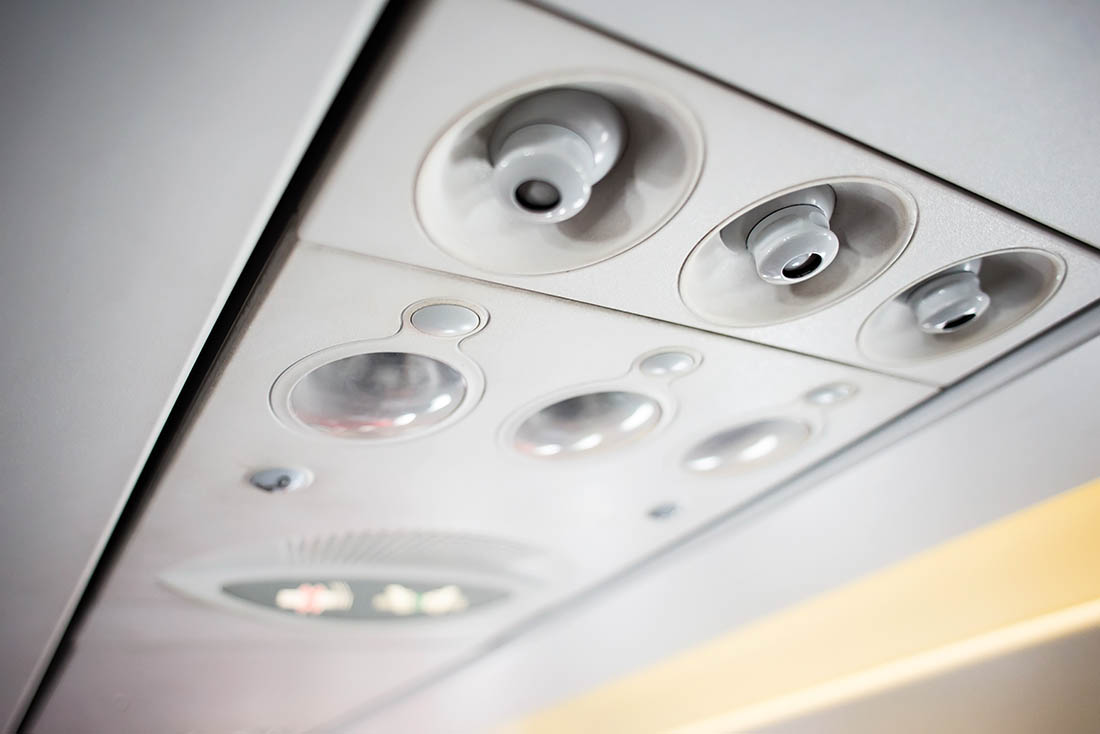
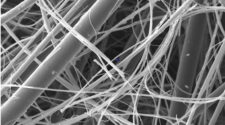
![Figure 1: Heat Exchanger Proventics GMBH.[22]](https://www.filtnews.com/wp-content/uploads/IFN_2_2024_crimpedmicrofiberyarns_Fig.-1-Heat-exchanger-225x125.jpg)
